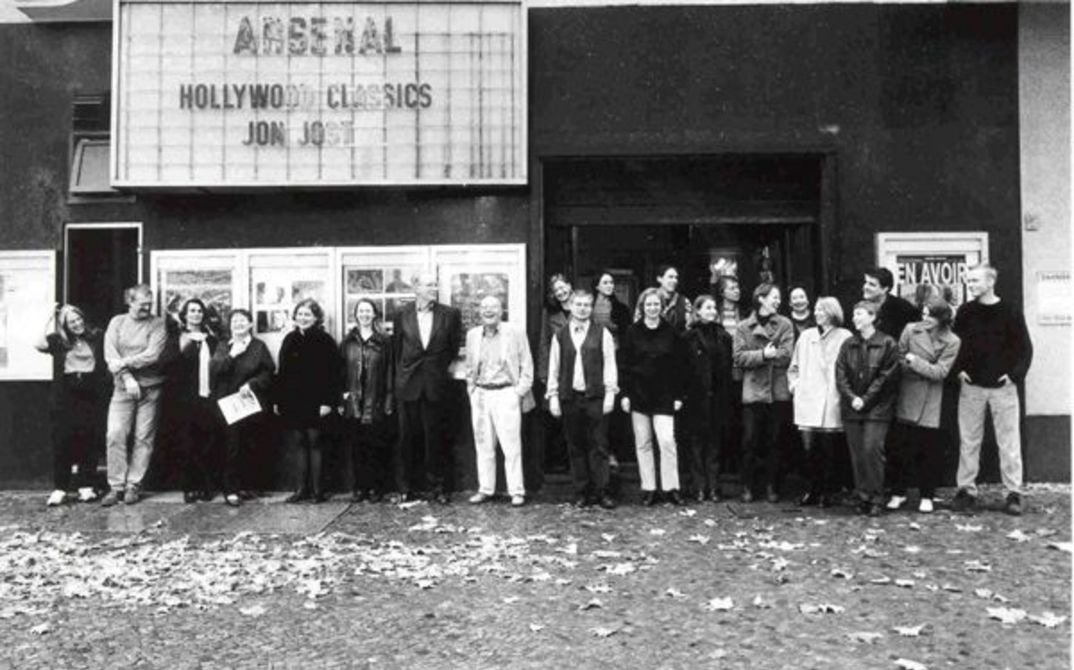
1963
Ulrich and Erika Gregor found the Friends of the German Film Archive (Freunde der Deutschen Kinemathek/FDK) with a group of other like-minded cinephiles. They show films at the Akademie der Künste and bring out the "Kinemathekheft" publication. COME BACK AFRICA by Lionel Rogosin is the first film to enter into the FDK’s possession.
1964
The FDK organise a Critics’ Week together with the Club of Berlin Film Journalists and the Club of Munich Film Critics, which forms the first ever alternative to the Berlinale.
1968
The FDK sets up a non-commercial film distributor in order to make their archive accessible to those outside Berlin.
1970
The Arsenal cinema opens in Welserstraße in the Schöneberg district of Berlin. It is the venue for a film programme that offers an alternative to the Berlin International Film Festival, which this year is called off halfway through due to the scandal surrounding Verhoeven’s film O.K..
1971
The Berliner Festspiele entrust the FDK with developing a new festival concept. On July 27, the first "International Forum of New Cinema" begins. The selection committee consists of Erika Gregor, Ulrich Gregor, Gero Gandert, Heiner Roß and Manfred Salzgeber. The first full-time staff member is Sylvia Andresen, with her position being advertised in “Extradienst” as followed: “Secretary wanted for an interesting job with no risk of repression.”
1974
The 50th edition of the "Kinemathek" publication series appears with the title “Political Cinema in Latin America: Argentina and Chile”.
1977
Alf Bold sets up Arsenal 2 in one of the rooms adjoining the Arsenal cinema in order to show experimental, underground and avant-garde films.
1978
Videom forms a part of the Forum programme for the very first time within the "New American Filmmakers" series.
1985
Plans to erect a Filmhaus at Potsdamer Platz in the ruins of the Hotel Esplanade next to the Berlin Wall begin. The architect is Herman Hertzberger.
1986
Claude Lanzmann receives the first-ever Caligari Prize for his nine-hour documentary SHOAH.
1996
The Forum is the first section of the Berlinale to present its activities in the still young world wide web.
1998
Nettie Wild’s A PLACE CALLED CHIAPASA, which showed at the Forum, becomes the most successful film to be ever distributed by the FDK.
2000
The Arsenal cinema and the FDK and Forum offices are the first institution to move into the new Filmhaus at Potsdamer Platz.
2001
Generational change part 1: Christoph Terhechte takes over as head of the Forum from Ulrich Gregor.
2004
Generational change part 2: Milena Gregor, Birgit Kohler and Stefanie Schulte Strathaus take over as the FDK’s board of directors.
2006
Anselm Franke and Stefanie Schulte Strathaus extend the Forum by creating the Forum Expanded programme, a new section dedicated to the boundary zone between film and visual art.
2008
The Friends of the German Film Archive rename themselves Arsenal – Institute for Film and Video Art and reorganise their activities accordingly.
2010
An online database makes the archive even more widely available, which has since swelled to more than 7,000 film prints.
2015
The archive moves districts from Spandau to Wedding. silent green Kultierquartier doesn’t just house archive prints, but also becomes an event location for Living Archive and other Arsenal projects.
2016
You are here
∞
Arsenal Forever